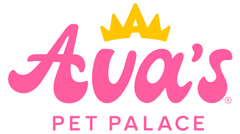Why Movement Matters: The Link Between Exercise and Longevity in Dogs
We all want our dogs to live long, happy lives. And while love, care, and good food are essential, regular physical activity is one of the most important (and overlooked) parts of helping our pets live longer and healthier.
So what’s really happening when your dog is running around the yard, going for walks, or learning new tricks? A whole lot of good things.
Here’s why movement matters so much:
1. Joint and Muscle Health: Movement helps maintain flexibility in joints and strength in muscles. Dogs that stay active are less likely to develop arthritis or experience stiffness as they age. Especially for medium and large breeds that are prone to joint issues, regular movement supports long-term mobility. Think of movement as “maintenance” for your dog’s body—it helps everything stay loose and strong.
2. Weight Management: Obesity in dogs has been on the rise in recent years, and it comes with serious risks: heart disease, diabetes, joint problems, and more. Daily activity is one of the best ways to manage your dog’s weight, alongside a healthy diet. Regular movement helps burn calories, regulate appetite, and reduce fat storage. Even short walks or 10-minute play sessions can make a big difference.
3. Mental Stimulation: Dogs need mental enrichment as much as physical activity. Bored dogs are more likely to develop behavioral issues like chewing, barking, and anxiety. Exercise often includes new sights, smells, and challenges that keep their brains engaged. Activities like training, agility, or even hide-and-seek exercises tap into natural instincts and provide valuable stimulation.
4. Digestive and Heart Health: Exercise supports healthy digestion by stimulating bowel movements and improving gut motility. It also promotes heart health by improving circulation and building cardiovascular strength. Just like with humans, a sedentary lifestyle can lead to a range of internal health issues. Movement keeps things flowing, literally.
5. Strengthening Your Bond: Time spent being active with your dog builds trust, communication, and emotional connection. Whether you're playing fetch, going on walks, or working through a trick routine, these moments foster a deeper relationship. Your dog learns to look to you for fun, guidance, and positive attention, which strengthens the bond between you.
6. Boosts Confidence: Dogs that get regular physical activity, especially training-based movement, often feel more confident in themselves and their environment. Learning new things and succeeding at challenges helps build emotional resilience and reduce fear-based behaviors.
7. Helps with Aging Gracefully: Senior dogs still need exercise, it just needs to be tailored to their abilities. Gentle walks, swimming, and stretching can help keep older pups feeling young at heart. The earlier you establish a fitness routine, the more likely your dog will stay mobile and happy into their golden years.
How to Make It Happen: Start small. Even five minutes of focused play or movement a few times a day can make a noticeable difference. You don’t have to hit 10,000 steps or get your pup a gym membership—just make activity part of your everyday life.
Try rotating through a few fun movement-based activities each week: a walk one day, a training session the next, fetch or a treat puzzle the day after. Listen to your dog and follow their pace, but always make time for movement.
Movement = longevity. And the best part? Your dog thinks this is all just playtime.
Grab a toy, toss a treat, and let the tail wags lead the way!

